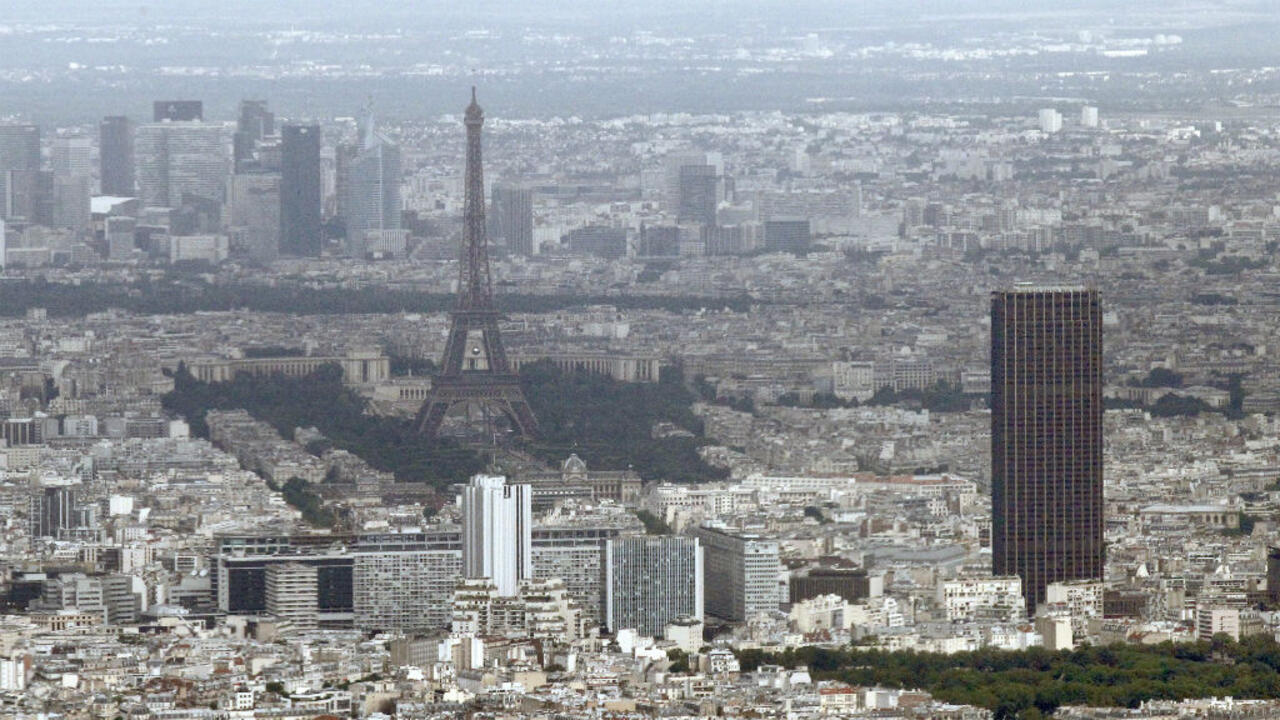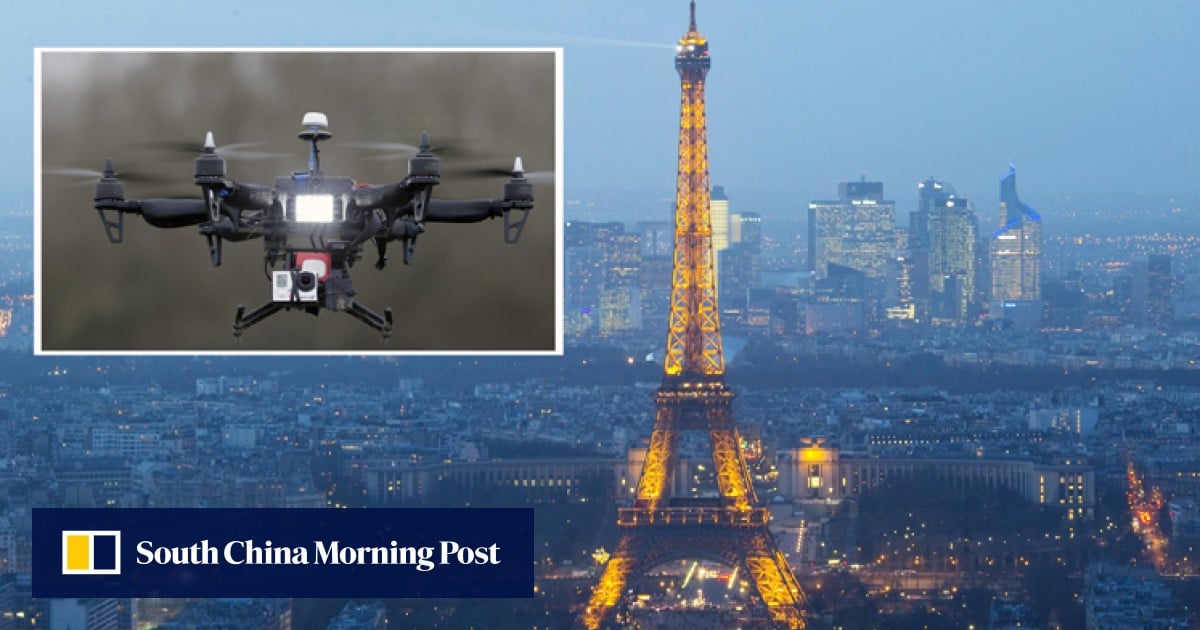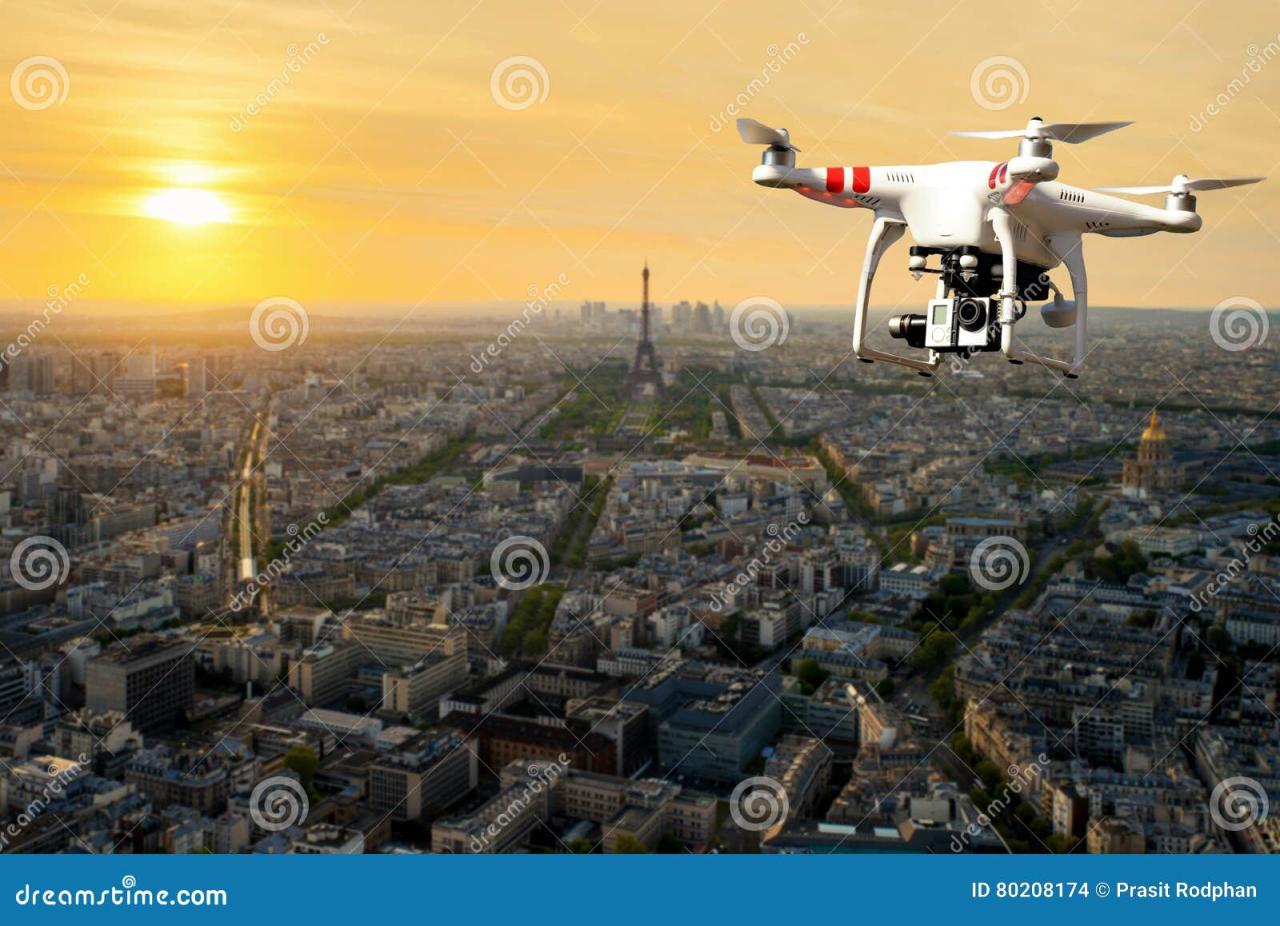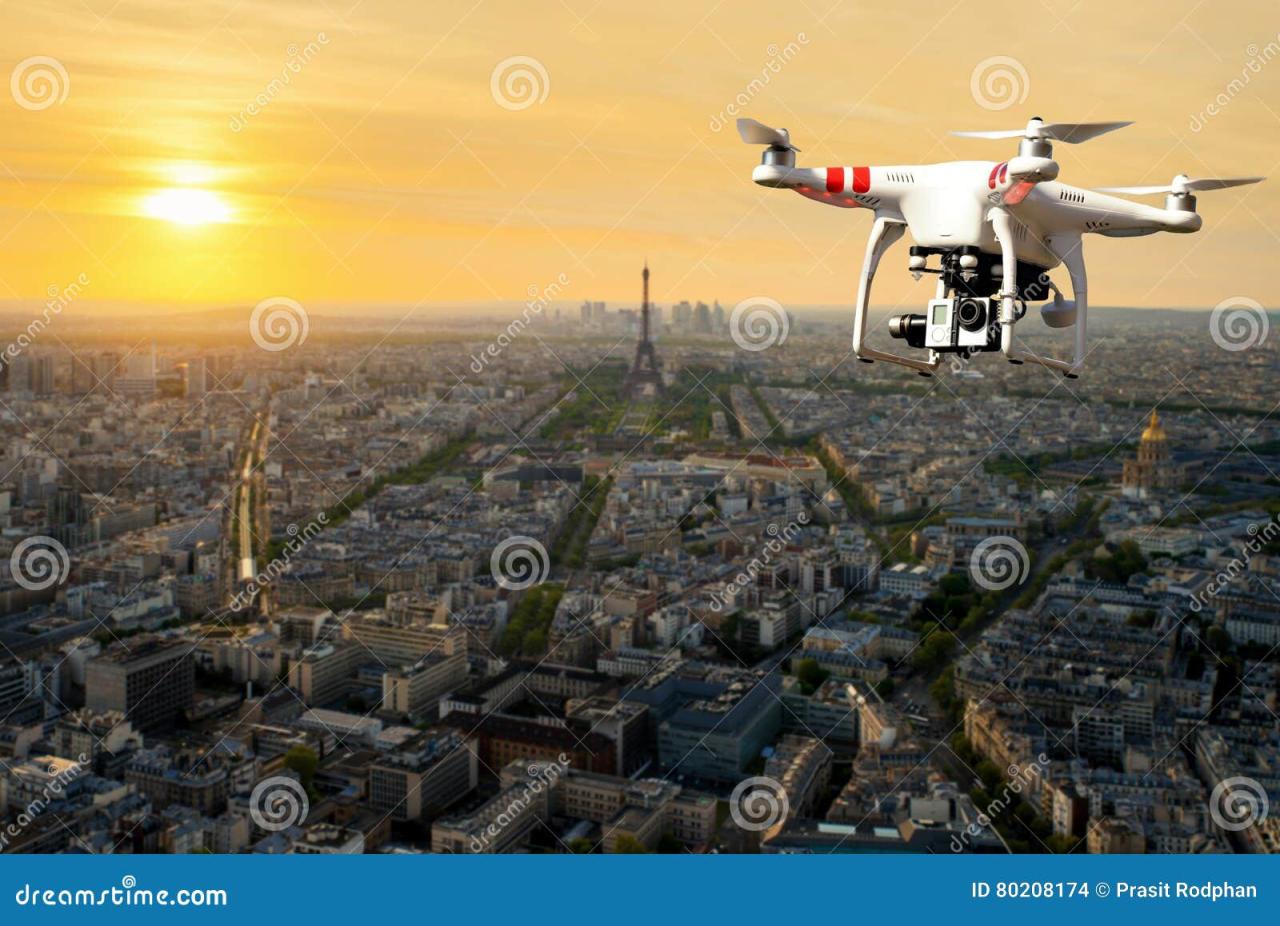Mystery drone Paris: Strange unmanned aerial vehicles have been spotted across the City of Lights, sparking a wave of speculation and investigation. These mysterious drones, varying in size, shape, and color, have been sighted near iconic landmarks and bustling districts, leaving a trail of unanswered questions. Were these sightings harmless occurrences, or something more sinister? This exploration delves into the reports, theories, and investigations surrounding these enigmatic aerial visitors.
From initial sightings and the characteristics of the drones themselves—their size, shape, color, and any distinguishing features—to the specific locations and times of their appearances, we’ll piece together a timeline of events. We’ll also examine the various theories surrounding their purpose, ranging from innocent recreational use to more concerning possibilities like surveillance or even potential threats.
Recent Sightings and Reports of Unusual Aerial Activity in Paris

Paris has recently experienced a series of unexplained drone sightings, sparking curiosity and concern among residents and authorities alike. These sightings, characterized by unusual flight patterns and drone specifications, have led to increased speculation about their origin and purpose. This section details the reported sightings, providing a factual overview of the available information.
Characteristics of Reported Drones
Reports describe a variety of drones, suggesting multiple operators or drone types. Some accounts mention small, black, quadcopter-style drones, barely larger than a hand, moving with surprising speed and agility. Others describe larger, more angular drones, possibly fixed-wing, exhibiting unusual flight patterns, including hovering for extended periods and seemingly defying wind conditions. Color descriptions vary, with reports of black, grey, and even white drones.
Unique features mentioned include unusually bright or flashing lights, and in some cases, a noticeable lack of any visible markings or identifying features. The absence of easily identifiable features makes it difficult to definitively classify these drones.
That whole mystery drone thing in Paris is pretty wild, right? It makes you think about the potential for things to go wrong with drone technology, like that orlando drone show accident which highlighted safety concerns. So, while the Paris drones are intriguing, it’s a good reminder that we need to be mindful of the risks involved with these increasingly common devices.
Locations of Drone Sightings
The reported sightings are scattered across various Parisian districts and landmarks. Several incidents occurred near the Eiffel Tower, with drones reported flying unusually close to the monument. Other sightings have been reported near the Louvre Museum, Notre Dame Cathedral (prior to and after the fire), and along the Seine River. Sightings have also been reported in less central areas, including the Bois de Boulogne and the Parc des Buttes-Chaumont, suggesting a broad operational range for these unidentified drones.
Timeline of Reported Sightings
The frequency of sightings has fluctuated. There was a cluster of reports in late October, followed by a period of relative quiet, then a renewed increase in sightings in early December. The duration of each sighting varies considerably, from a few minutes to over an hour in some cases. The lack of consistent reporting and the varied descriptions make it difficult to establish a precise pattern.
Table of Reported Sightings
| Date | Time | Location | Description | Source |
|---|---|---|---|---|
| October 26, 2024 | 22:45 | Near Eiffel Tower | Small, black quadcopter; erratic flight pattern | Eyewitness testimony, social media posts |
| October 28, 2024 | 01:15 | Louvre Museum | Larger, angular drone; hovering for 30 minutes | Security camera footage, police report |
| December 5, 2024 | 17:30 | Seine River | White drone; unusual trajectory, high altitude | Multiple eyewitness accounts, news reports |
| December 10, 2024 | 09:00 | Bois de Boulogne | Small, black drone; rapid movement, low altitude | Park ranger report |
Speculation on the Purpose of the Mystery Drones: Mystery Drone Paris

The recent spate of unidentified drone activity over Paris has sparked considerable speculation regarding their purpose. The lack of clear identification and consistent flight patterns makes definitive conclusions impossible, but several plausible explanations, ranging from benign to sinister, warrant consideration. We will explore these possibilities, analyzing the evidence (or lack thereof) and outlining hypothetical scenarios for each.
Harmless Recreational Use
One possibility, however unlikely given the scale and frequency of the sightings, is that the drones are being used for recreational purposes. This could involve hobbyists testing advanced drone capabilities, perhaps conducting unauthorized aerial photography or filming. However, the consistent reports and the apparent sophistication of the drones’ flight patterns make this explanation less plausible. A hypothetical scenario could involve a group of tech-savvy enthusiasts coordinating a complex drone light show, unintentionally causing alarm due to their lack of authorization and the unusual nature of the display.
This scenario lacks the element of secrecy often associated with the reports.
Surveillance and Espionage
A more concerning possibility is that the drones are being used for surveillance or espionage. The drones could be equipped with advanced sensors and cameras capable of gathering intelligence, potentially targeting high-profile individuals, locations, or events. This scenario is supported by the potential for covert operation and the difficulty in tracing the drones’ origins. A hypothetical scenario could involve a foreign government or intelligence agency using the drones to gather information on French political figures or military installations.
The drones could be programmed to fly in unpredictable patterns to avoid detection, and the data collected could be transmitted wirelessly to a remote location.
Commercial Activities
Another possibility is that the drones are being used for some sort of commercial activity, possibly unauthorized. This could involve aerial photography for real estate or construction projects, or even delivery services testing new technologies. The stealth nature of the drones makes it difficult to assess this possibility. A hypothetical scenario could involve a company secretly testing a new delivery drone system, but without proper authorization, leading to the reports of mysterious activity.
Potential Threats
The most alarming possibility is that the drones represent a potential threat. This could involve their use for delivering explosives, disrupting critical infrastructure, or even carrying out targeted attacks. This scenario is supported by the potential for significant damage and the inherent difficulty in intercepting or neutralizing the drones. A hypothetical scenario could involve a terrorist group using the drones to plant explosives in a crowded area or to disrupt power grids.
The drones could be equipped with small payloads, making detection difficult.
That whole mystery drone situation in Paris is pretty wild, right? It makes you think about the potential for things to go wrong with drone technology, even on a smaller scale. Check out this article about the orlando drone show accident for a reminder of how important safety protocols are. The Paris drones, though, are a whole different level of intrigue – hopefully, we find out what’s up soon!
Comparison of Theories
| Purpose | Plausibility | Potential Consequences |
|---|---|---|
| Harmless Recreational Use | Low | Minor inconvenience, potential fines |
| Surveillance/Espionage | Medium | Privacy violations, potential national security breaches |
| Commercial Activities (Unauthorized) | Medium | Legal repercussions, potential safety risks |
| Potential Threats | High (depending on the nature of the threat) | Significant damage, potential loss of life |
Investigative Approaches and Potential Leads
Uncovering the mystery behind the Paris drones requires a multi-faceted investigative approach, combining technological analysis with traditional investigative techniques. Success hinges on efficiently gathering and analyzing diverse data sources, prioritizing leads based on their potential for quick results and actionable intelligence.The investigation should leverage both technological and human intelligence (HUMINT) methods to identify the drones’ origins and operators. Technological approaches focus on analyzing the drones themselves and their flight data, while HUMINT relies on gathering information from people and organizations.
Technological Investigative Methods
Technological investigation should begin with a thorough examination of any recovered drone debris. Analysis of the drone’s components, including the manufacturer’s markings, firmware, and unique identifiers, can reveal its origin and potentially link it to a specific distributor or owner. Furthermore, analyzing flight data logs (if recoverable) could provide insights into the drone’s flight paths, altitudes, and operational parameters, potentially revealing patterns or operational bases.
Signal analysis of any remaining electronic components might uncover communication frequencies and protocols used by the drone, leading to identification of the control system and operator. This could involve sophisticated signal processing and reverse engineering techniques.
Human Intelligence Gathering
Gathering human intelligence is crucial. Eyewitness accounts, even if fragmented or imprecise, can provide valuable clues about the drones’ appearance, flight patterns, and the times of their appearances. Security camera footage from businesses and residences in the affected areas needs to be systematically collected and analyzed. This footage could provide crucial visual evidence, potentially capturing images of the drones or their operators.
Social media posts, including tweets, Instagram posts, and TikTok videos, could reveal valuable information, such as citizen observations, photos, and videos. The investigation should actively monitor social media platforms for relevant content.
Potential Lines of Inquiry
Several lines of inquiry should be pursued simultaneously. A review of local drone regulations is essential to determine whether the observed drone activity violated any laws or licensing requirements. This could lead to identifying potential violators or suspects. A detailed analysis of the drones’ flight patterns, using geographical information systems (GIS) technology, could reveal potential launch and landing sites, or regular flight paths indicating a specific purpose or target.
The investigation should also explore any potential links to similar drone incidents in other locations.
Prioritized Investigative Leads, Mystery drone paris
The following investigative leads are prioritized based on their likelihood of yielding quick and impactful results:
- Analysis of recovered drone debris: If any debris is found, its analysis is the highest priority. This could quickly identify the drone’s manufacturer and model, potentially narrowing down the pool of suspects.
- Review of security camera footage from areas of frequent sightings: This offers a high chance of capturing visual evidence of the drones in action or potentially revealing their operators.
- Social media monitoring: Social media analysis could rapidly uncover eyewitness accounts and potentially reveal valuable clues from citizen observations.
- Interviewing eyewitnesses: Gathering firsthand accounts from credible witnesses can provide valuable contextual information and corroborate other evidence.
- Examination of local drone registration records: This may help identify drones operating without proper authorization, though the effectiveness depends on the completeness of registration databases.
Public Reaction and Media Coverage
The appearance of unidentified drones over Paris sparked a wide range of reactions from the public, fueled and shaped by the media’s coverage of the events. Initial responses were a mixture of curiosity and amusement, with many Parisians sharing photos and videos on social media, speculating about the drones’ origins and purpose. However, as the sightings continued and explanations remained elusive, a shift towards concern and even fear became evident.The media played a crucial role in shaping public perception.
Different news outlets adopted varying tones and perspectives, influencing how the public interpreted the events. Some presented the story with a sense of playful intrigue, focusing on the mystery and the unusual spectacle. Others took a more serious approach, highlighting potential security risks and the lack of official explanations. This divergence in reporting contributed to the diverse range of public reactions.
Public Reactions to Drone Sightings
The public’s reaction to the drone sightings was multifaceted and evolved over time. Initially, many people found the situation intriguing and shared their observations and speculations on social media platforms like Twitter and Instagram. Videos and photos of the drones became viral, leading to a sense of shared experience and collective curiosity. However, as the sightings persisted without explanation, a growing sense of unease emerged.
That whole mystery drone situation in Paris is pretty wild, right? It makes you wonder about the frequency of these things. Check out this article about drone crashes in Paris to get a better sense of the scale of the problem. Understanding those incidents might shed some light on the mysterious drone, maybe even point to a common thread or similar technology.
Some expressed concerns about potential surveillance, while others worried about the possibility of malicious intent. The lack of information from authorities further fueled anxieties, leading to speculation and conspiracy theories. News reports detailing near misses with aircraft or potential disruption to air traffic added to the growing public concern.
Media Coverage and its Impact
Media coverage of the Paris drone incidents significantly impacted public perception and the subsequent investigations. Early reports in major newspapers like Le Monde and international outlets like the BBC often focused on the mystery surrounding the drones, presenting them as a fascinating and unusual event. The tone was generally lighthearted and speculative, emphasizing the unknown. However, as the incidents continued and no clear explanation emerged, the media’s coverage shifted.
News outlets began to emphasize the potential security risks, raising questions about the drones’ origins and purpose. Some reports highlighted the strain on law enforcement resources and the difficulty of tracking the drones. This shift in tone contributed to a growing sense of concern and even fear among the public. The constant media attention also put pressure on authorities to provide explanations and take action.
Timeline of Media Coverage and Public Opinion
The following timeline illustrates key events in the media coverage and their impact on public opinion:
- Day 1-3: Initial reports focus on the novelty and mystery of the drone sightings. Social media buzzes with speculation and humorous memes. Public reaction is largely one of curiosity and amusement.
- Day 4-7: News outlets begin to adopt a more serious tone, highlighting potential security concerns and the lack of official explanations. Public opinion shifts towards increased concern and anxiety.
- Day 8-14: Speculation and conspiracy theories proliferate online. Media reports feature expert opinions, varying from technological possibilities to more outlandish explanations. Public anxiety remains high, with some calling for stricter drone regulations.
- Day 15 onwards: As investigations continue, media coverage focuses on the challenges faced by authorities and the ongoing search for answers. Public attention gradually wanes, though the incident remains a topic of discussion and debate.
Illustrative Scenarios and Hypothetical Outcomes
Let’s explore some possible explanations for the mysterious drone activity in Paris, considering both benign and malicious scenarios. These scenarios are hypothetical, but they illustrate the range of possibilities investigators need to consider. The technological capabilities and design features of the drones will differ significantly depending on their intended purpose.
Harmless Drone Use: Artistic Aerial Photography and Environmental Monitoring
Imagine a team of independent artists, known for their innovative use of technology, using a fleet of advanced drones to create a breathtaking aerial light show over Paris. These drones, equipped with high-resolution cameras and sophisticated LED lighting systems, would be programmed to perform complex choreographed movements, creating stunning visual effects against the city’s iconic landmarks. The drones themselves would be relatively small, perhaps around 50cm in wingspan, with lightweight carbon fiber frames for maneuverability.
They’d have multiple color LED arrays for dynamic lighting effects, and GPS/IMU systems for precise positioning. Each drone would bear a unique, subtle identification marking – perhaps a small, stylized logo – for easy tracking and identification by the artists. The project would have received necessary permits and would be carefully planned to minimize disruption. This scenario is plausible, mirroring similar light shows already implemented in other cities.
Malicious Drone Use: Targeted Surveillance and Delivery of Harmful Materials
Alternatively, the drones could be involved in a sophisticated surveillance operation. In this scenario, the drones would be larger, perhaps 1 meter in wingspan, designed for extended flight times and carrying more advanced equipment. They could be equipped with high-resolution zoom cameras capable of facial recognition, thermal imaging sensors, and silent propulsion systems. The drones might be modified with antennas for communication with a central control unit, possibly concealed somewhere in the city.
They might lack visible markings, instead relying on stealth technology and potentially employing jamming devices to interfere with detection. The individuals behind this operation could be a private intelligence agency, a foreign government, or even a criminal organization aiming to gather sensitive information or conduct targeted harassment. The delivery of harmful materials is also a possibility, with the drones adapted to carry and dispense small payloads of biological or chemical agents, though this scenario presents higher technical challenges and increased risks of detection.
Visual Representation of Drones in Each Scenario
Harmless Drone (Artistic Aerial Photography):
This drone would be depicted as sleek and lightweight, with a multi-rotor design for stability. The body would be primarily white or a light color, allowing the LED lights to be highly visible. The subtle logo would be placed discreetly on the underside of the drone. Technological specifications would include high-resolution cameras, GPS, IMU, and a sophisticated flight control system capable of autonomous choreography.
The LED array would be highly visible, designed for visual impact.
Malicious Drone (Targeted Surveillance):
This drone would be depicted as dark grey or black, with a more robust and stealthy design. The body would be angular, minimizing its radar signature. The cameras and sensors would be integrated seamlessly into the drone’s body, with no visible external markings. Technological specifications would include high-resolution zoom cameras with facial recognition capabilities, thermal imaging, silent propulsion, and encrypted communication systems.
Antennas would be integrated discreetly.
Final Wrap-Up

The mystery drone Paris sightings remain a captivating enigma. While the exact purpose of these drones remains unclear, the investigation highlights the potential for both technological advancements and security vulnerabilities. The public reaction, media coverage, and ongoing investigations underscore the importance of understanding the implications of such occurrences. Whether these drones represent a harmless anomaly or a more significant concern, their presence serves as a reminder of the evolving technological landscape and its impact on our lives.
Query Resolution
What types of technology could be used to track these drones?
Various technologies could be employed, including radar systems, radio frequency tracking, and even AI-powered image recognition to identify the drones and their operators.
Could these drones be linked to any specific groups or organizations?
That’s a key question under investigation. Analysis of flight patterns, drone technology, and potential links to known entities could reveal clues.
What legal ramifications are there for operating drones illegally in Paris?
French law has strict regulations regarding drone operation. Unauthorized flights, especially near sensitive areas, could result in significant fines and even criminal charges.
